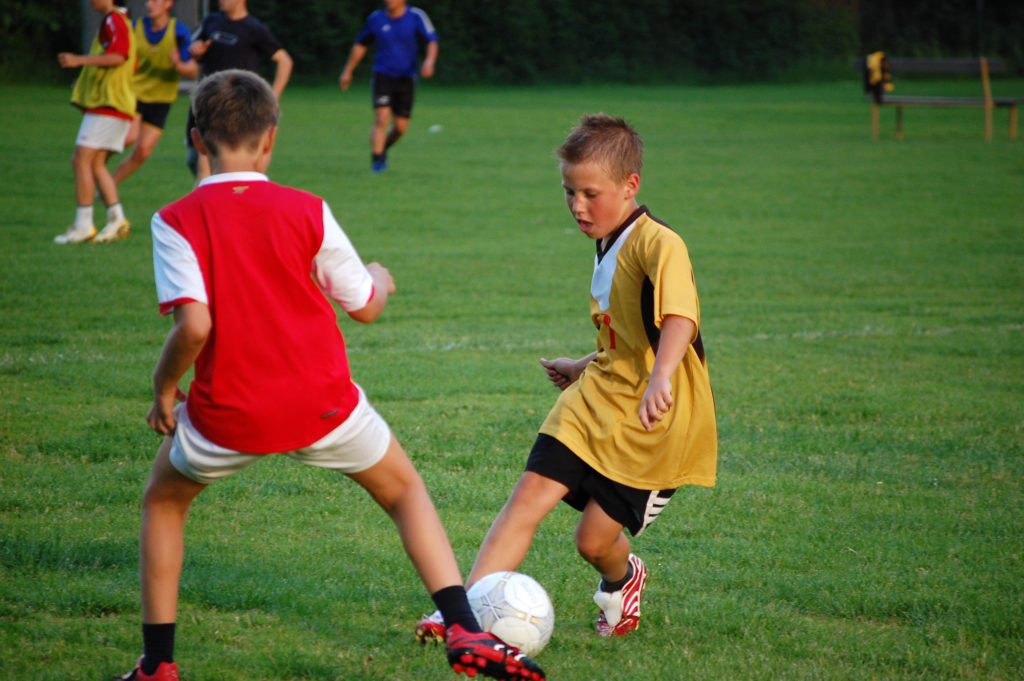
You probably already know that exercise is good for your child. Children need exercise to keep their heart and lungs healthy, maintain a healthy body weight, and keep their cholesterol levels and blood sugars normal. But if your child has diabetes, you may have additional questions or concerns about how to keep your child safe.
Exercise, insulin, stress, and diet influence blood sugars. Too much or too little of any one of these may cause changes in the blood sugar, which can be dangerous for your child. More exercise than normal may cause low blood sugar, while less exercise may increase blood sugars.
Consistent exercise is especially important for your child’s diabetes because it helps to lower blood sugars by allowing your child’s body to use insulin more effectively. Because exercise can raise or lower the blood sugar, the goal is to keep your child’s blood sugar over 120 mg/dL (milligrams per deciliter) before and during exercise.
Make An Appointment
Phone 402-955-3871
How To Help Your Child Exercise Safely
Whether your child is playing in a soccer game or skating around the ice rink, the most important way to keep them safe is to check their blood sugar. Checking the blood sugar tells you if the blood sugar is high enough to safely exercise.
Check their blood sugar:
- before the activity
- at least every hour during the activity
- and after the activity
You should also test blood sugar at midnight and 3 a.m., especially when starting a new activity or if your child exercised more than normal.
Be aware — extra activity may cause a drop in blood sugar even if you’ve taken steps to prevent it. Blood sugars may drop during the activity, right after the activity, or up to 24 hours after the activity.
Follow these guidelines to determine the next steps for your child. Please note that the carbohydrates in these guidelines are in addition to any regularly scheduled snack.
- If the blood sugar is less than 70 mg/dL before or during the activity, follow the low blood sugar treatment steps. Your child should stop physical activity until blood sugar is over 70. Once the blood sugar is over 70, give them an extra 15 grams of carbohydrate (liquid or solid) before they resume activity.
- If the blood sugar is between 70 and 120 mg/dL before or during the activity, give your child 15 grams of carbohydrate before they resume activity. You don’t need to wait until their blood sugar is over 120 mg/dL.
- If their blood sugar is over 240, check for ketones and drink water.
If extra snacks aren’t enough to keep blood sugar up, try giving your child less insulin at their meal closest to the activity. You can call the diabetes team at (402) 955-3871 for help in figuring this out.
Your child should not exercise if:
- There are ketones in the urine/blood
- They are sick enough to stay home from school
- Blood sugar is over 400.
Drinking plenty of water is important for all athletes. The blood sugar will help you determine if your child should drink fluids that are sugared (such as Gatorade or juice) or non-sugared (such as water).
Remember, these guidelines give you a starting point for insulin and food adjustments when preparing for activities. Over time, you will be able to learn how your child’s body reacts to exercise.
Signs, Symptoms, and Treatment of Low Blood Sugar (Hypoglycemia)
If your child is going to be exercising or participating in a sport, it’s important to know the signs of low blood sugar (hypoglycemia), which can be dangerous for your child if left untreated. Signs of low blood sugar include:
- Clamminess or a cold sweat
- Inability to concentrate
- Shaky feeling
- Hunger
- Tingling or numbness in lips
- Headache
- Feeling nervous or irritable
- Fatigue
- Poor coordination
- Paleness
If you child has blood sugar less than 70, give them 15 grams of a carbohydrate that is easy to swallow and will get their blood sugar up quickly, such as:
- 1⁄2 cup fruit juice or regular soda pop
- 4 glucose tablets
- 1 tube of glucose gel
Your child’s blood sugar will need to be rechecked 15 minutes after treating with the carbohydrate. If the blood sugar at that time is less than 70, retreat with 15 grams of carbohydrate that is easy to swallow.
Keep rechecking and retreating every 15 minutes until the blood sugar is over 70. Once the blood sugar is above 70, give them an additional 15 grams of liquid or solid carbohydrate, such as crackers or fruit.
Remember, if your child’s blood sugar is less than 50, treat with 30 grams of carbohydrate that is easy to swallow rather than 15 grams.
Signs, Symptoms and Treatment of High Blood Sugar (Hyperglycemia)
High blood sugar (hyperglycemia) can also be dangerous for your child if left untreated. Signs of high blood sugar include:
- Increased hunger
- Increased thirst
- Increased urination
- Sudden weight loss
- Fatigue
- Mood changes
- Hyperactivity (such as fidgeting, wandering, or talking too much)
If your child’s blood sugar is over 240, check their urine or blood for ketones. If ketones are present, your child should stop the physical activity and drink water.
Exercising in the Heat or Cold
For anyone, exercising under extreme weather conditions (i.e., excessive humidity or excessive heat or cold) can be dangerous. But for children with diabetes, it can cause high or low blood sugars.
Signs and symptoms of low or high blood sugars may be more difficult to recognize in these conditions, and more frequent blood sugar monitoring may be necessary.
Do you still have questions about your child’s diabetes and exercise? Contact the diabetes team at Children’s Diabetes Center, Children’s Nebraska at 402-955-3871 for more information about keeping your child safe while exercising.